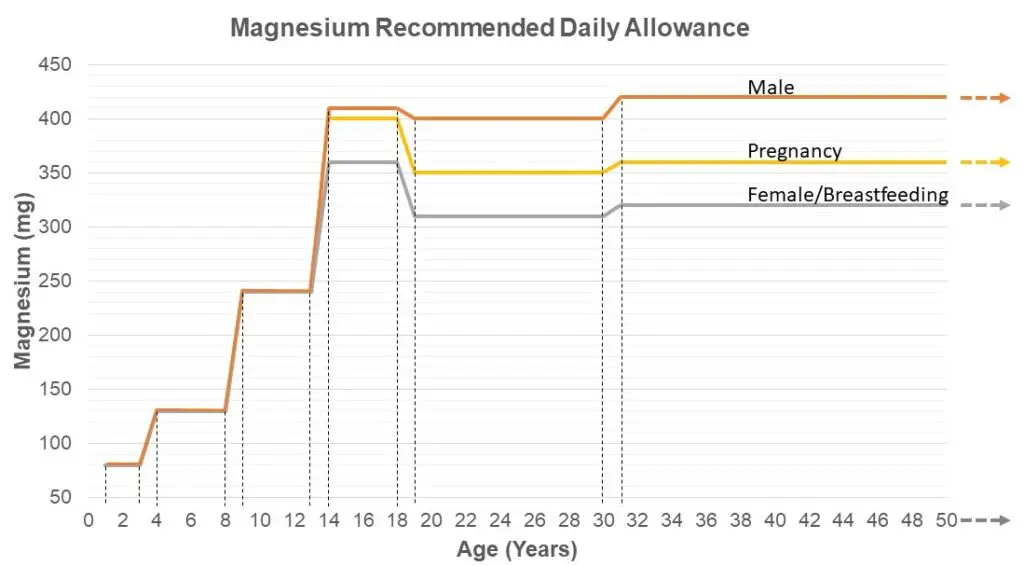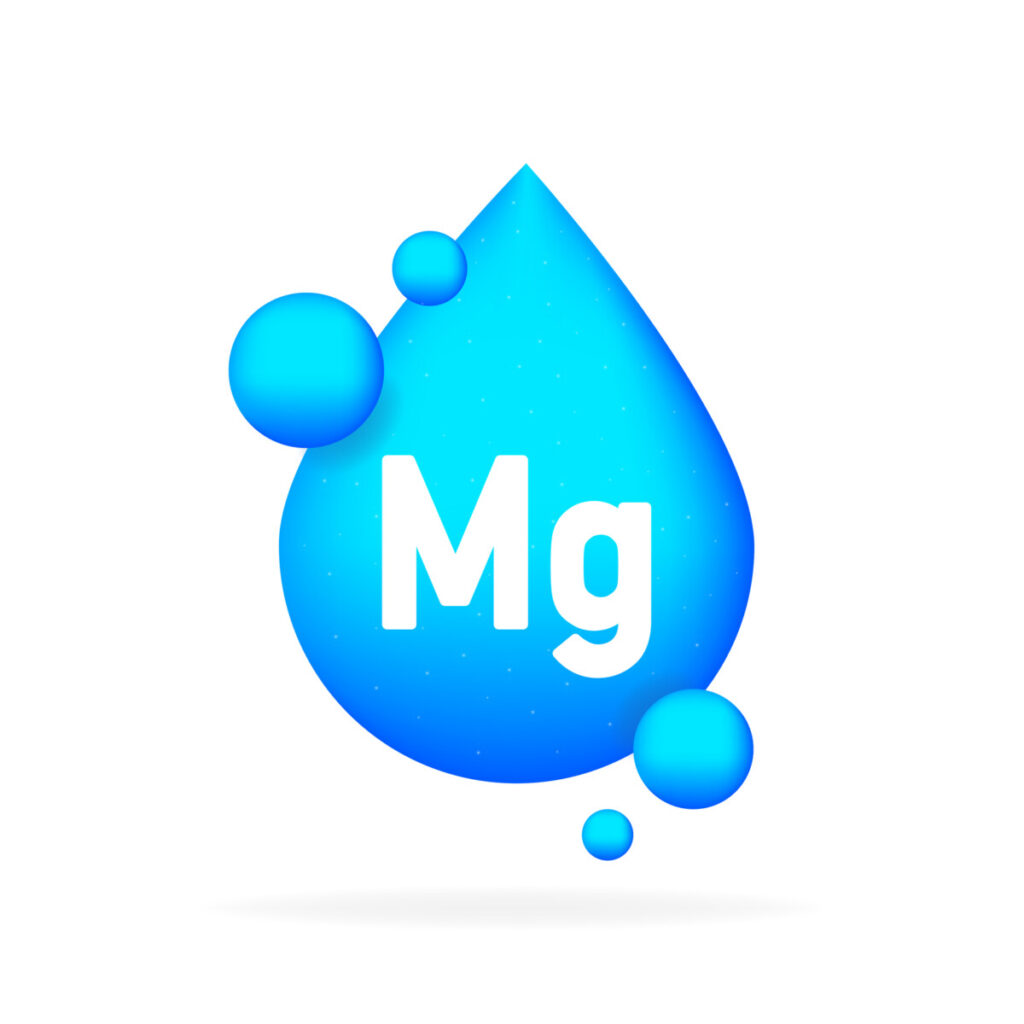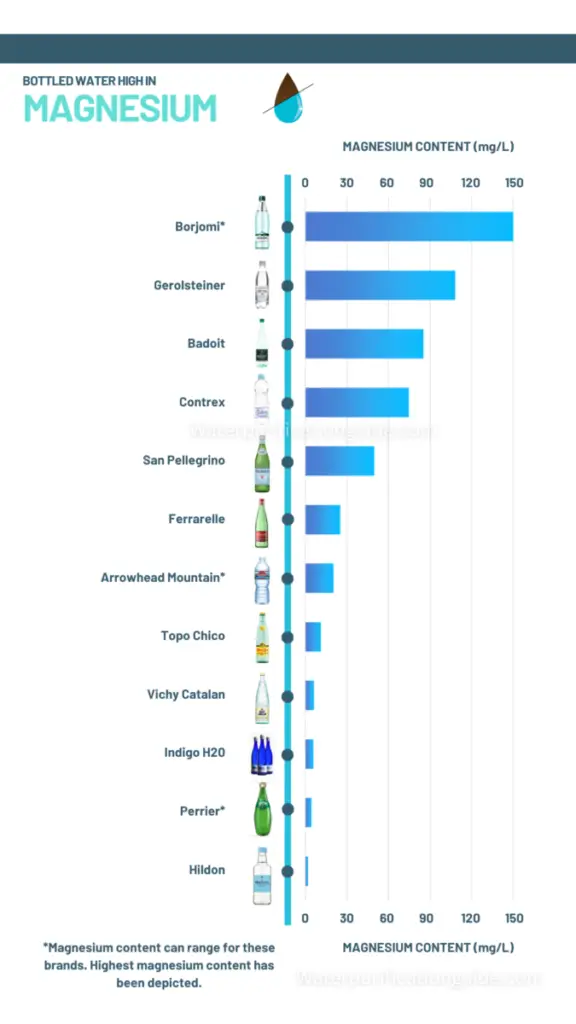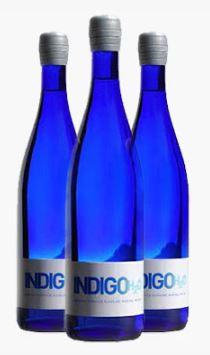Drinking magnesium rich mineral water is an excellent way to make sure you get enough magnesium in your diet. Fortunately, there are many mineral water brands available today that are are high in magnesium and also taste great!
This article explains why consuming enough magnesium is important, how much you actually need, and can you consume too much magnesium. Plus which brands of mineral water have the highest magnesium levels (We discuss these brands in detail). Keep reading for everything you need to know about the top brands of bottled mineral water that are high (or low) in magnesium!
Why Magnesium Is Important
Magnesium is a nutrient that helps keep your body healthy.
Magnesium is important in regulating blood glucose levels, blood pressure, muscle and nerve function, and is required for making bone, and synthesis of protein, DNA, and RNA (ref 1: IOM 1997; Ref 2: Rude, 1998).
Magnesium is also important in maintaining nerve impulse conduction, muscle contraction, and a regular heart rhythm by facilitating the active transport of calcium and potassium ions across cellular membranes (Ref 2: Rude,1998).
Water Purification Guide has more information on which brands of mineral water are high in potassium available here.
How Much Magnesium Do I Need?
The recommended daily allowance (RDA) for magnesium varies with age, sex, and during pregnancy.
The RDA for magnesium and other nutrients were developed by the Food and Nutrition Board (FNB: ref 3) and is defined as:
“the average intake amount sufficient to meet the nutritional requirements of 97 – 98% of healthy individuals.”
In general, the RDA for magnesium:
- Steadily increases until about the age of 14 years for both males and females.
- More magnesium is required during pregnancy (360 to 400 mg/day – depending on age).
- Breastfeeding moms DO NOT need to increase their magnesium intake.
- Females (including breastfeeding moms) over the age of 14 years need 310 to 360 mg of magnesium per day.
- Males require roughly the same amount of magnesium throughout their life after they reach about 14 years old (400-420 mg/day).
- For healthy individuals that reach the ripe young age of about 31 years, the amount of magnesium required each day remains steady.
The chart below shows how much magnesium you should be consuming (from both food and water) each day.

Note: For male and female infants 0-12 months old, the FNB uses an Adequate Intake amount instead of an RDA. This is due to a lack of sufficient evidence available to create an RDA for infants. Adequate Intake (AI) means the intake level is assumed to ensure nutritional adequacy.
The AI for both male and female infants are as follows for magnesium:
- 0-6 months old = 30 mg magnesium per day.
- 7-12 months old = 75 mg magnesium per day.
Can You Consume Too Much Magnesium?

Healthy individuals cannot consume too much magnesium from food or water as any excess is eliminated by the kidneys as urine (ref 4: NIH 2021).
However, the overuse of magnesium supplements or medications can lead to high doses of magnesium in the body, which can have negative health effects, including:
- Diarrhea – high magnesium has a laxative effect.
- Nausea
- Abdominal cramping
Spring Water Vs Mineral Water
Both spring water and mineral water originate in physically protected geological underground aquifers. Some mineral water springs may flow to the surface unaided, but most are underground. In comparison, all spring water must flow to the surface unaided.
According to the U.S. Food and Drug Administration regulations, mineral water must have a minimum Total Dissolved Solids (TDS) value of 250 ppm. This minimum TDS value restriction does not apply to spring water. When rainwater passes through porous rock into these aquifers, it collects minerals such as magnesium, calcium, sodium, potassium, sulfates, and chlorides along the way. So while it is true that spring water also contains minerals, the minimum restriction does not apply.
No additional minerals can be added to mineral water. Carbon dioxide may be added (for carbonation).
Due to increased customer awareness on the benefits of magnesium, many mineral water and spring water products are sourced with high levels of magnesium. Today, many brands of bottled mineral and spring water have high levels of magnesium to the benefit of their customers.
With that in mind, let’s explore the top brands of mineral (and spring) water that contain high levels of magnesium!
Top 12 Brands Of Mineral Water With High Magnesium
Note: I’ve put each brand in order of highest magnesium content starting at the TOP.
However, some brands show a range of magnesium content as it can vary between testing (specifically, this includes Borjomi, Arrowhead and Perrier). In the infographic, these brands have an asterisk (*) and are depicted using their highest magnesium content – see more details in the product description below.

1. Borjomi Sparkling Mineral Water
Borjomi Sparkling Mineral Water has magnesium content that ranges between 20 and 150 mg/L. Borjomi water comes from a thermal artesian spring in the Borjomi Gorge in the Caucasus Mountains. As it travels to the surface, the warm water travels through volcanic rock layers picking up minerals along the way. It has a high TDS value of 1100 mg/L, making it a high mineral content water with a slightly salty taste.
Borjomi is famous for its 1500 year old water and patented bluish-green colored bottles called “Georgian Green”. Borjomi Sparkling mineral water is naturally alkaline and naturally carbonated that gives it a distinct and crisp taste.
2. Gerolsteiner
Gerolsteiner Sparkling Natural Mineral Water contains 108 mg/L of magnesium, which is the highest level of magnesium in the brands on our mineral water list. Extracted from the volcanic groundwater of Eifel in Germany, Gerolsteiner mineral water has a pleasant, soft, and crisp taste.
It is is naturally enriched with carbonic acid from the rock is low in sodium but rich in calcium and magnesium. This water is slightly acidic.
3. Badoit
Badoit mineral water has a high magnesium content of 85 mg/L. Badoit mineral water is collected from the springs of Saint Galmier in France. This naturally sparkling mineral water is light, delicate, and rich in magnesium.
Badoit water is naturally carbonated and is is famous for its characteristic tiny bubbles and refreshing taste. It is bottled in glass. It has a TDS of 1200 mg/L and a pH of 6.
4. Contrex

Contrex mineral water has a high magnesium content at 74.5 mg/L. Originally from France, Contrex water is also rich in calcium (486 mg/L) and capable of providing 100% of daily calcium needs (if you drink 2 liters of it every day).
Contrex mineral water also contains trace amounts of potassium. Since it is low in sodium, it is not too crisp. It may taste a tad ‘thick’ because of its natural hardness.
5. San Pellegrino Sparkling Carbonated Natural Mineral Water
San Pellegrino Sparkling Carbonated Natural Mineral Water has a high magnesium content of 49.5 mg/L. This water is sourced from the Italian Alps near Lombardy. It is naturally enriched in mineral salts (mainly magnesium and calcium). Carbon dioxide is added artificially and the water is bottled in glass to create fine bubbles and subtle nuances.
San Pellegrino is one of the most globally renowned mineral waters. It has a relatively high pH of 7.6 and a high calcium and magnesium content.
6. Ferrarelle Naturally Sparkling Mineral Water
Ferrarelle Naturally Sparkling Mineral Water contains 25 mg/L of magnesium. This Italian water company finds its water from the high peaks of southern Italy. Bottled near the Roccamonfina volcano, this water arises from the only cold geyser in Europe.
Ferrarelle is naturally sparkling (carbonated), has tiny bubbles, and is rich in minerals like calcium, potassium, and sodium. Drinking 2 liters of Ferrarelle gives you 100% of your daily recommended calcium and potassium intake. Ferrarelle has a TDS value of 1315 mg/L. This water promotes digestion and makes mealtime feel luxurious.
7. Arrowhead Mountain Spring Water
Arrowhead Mountain Spring Water contains 1.2-20 mg/L of magnesium according to their 2020 water analysis report. Arrowhead sources its water from springs in California, Colorado, and western Canada.
Note that only their ‘Mountain’ brand water is a natural mineral water, while other labels under the brand may be from other purified sources or artificially enriched with minerals.
Arrowhead Mountain Spring Water is slightly alkaline (pH range of 6.9-8.0), has low sodium levels of 2-15 mg/L, and is rich in calcium (3-52 mg/L).
8. Topo Chico Mineral Water
Topo Chico Mineral Water contains 11 mg/L of magnesium according to their latest annual water quality report. Topo Chico Mineral Water was unofficially hailed as the best sparkling water in Texas.
Topo Chico water is sourced and bottled from Monterrey in Mexico. With a history spanning more than two centuries, this water is naturally carbonated for the most part. Additional carbonation is added for extra bubbles.
This water tastes light and smooth and has small bubbles. It has a pH of 5.6 making it slightly acidic, and is also rich in calcium.
9. Vichy
Vichy Catalan water has a low magnesium content of 6 mg/L. Vichy Catalan is bottled at the thermal springs of Calde de Malavella in Spain and remains untouched until you pop it open.
The water has high amounts of sodium, bicarbonate and chloride resulting in a high TDS value (2,900 mg/L), making it a high mineral content water. It is naturally sparkling, with a slightly bitter taste from the natural carbonation.
10. Indigo H2O

Indigo Premium Bottled Alkaline Mineral Water has a relatively low magnesium content at 5.5 mg/L. Alkaline water is said to boost electrolytes, balance pH, and provide essential minerals. IndioH20 Mineral Water has a TDS of 250 mg/L.
Alkaline water is said to hydrate the body better than neutral water. The pH of Indigo H2O’s water is 8.8, making it a great choice if you prefer alkaline water.
It’s bottled in premium glass, making it a great aesthetic pick for your dinner table.
11. Perrier
Perrier Sparkling Mineral Water is a popular bottled water and relatively low magnesium content of 3.9-4.2 mg/L. Perrier water comes from a spring in Vergèze, France and is bottled on site. They use a unique and natural carbonation process involving the collection of the spring’s carbonic gas, which is filtered separately and later added back into the mineral water.
Perrier mineral water is also acidic, with a pH of 5.5, and contains high amounts of calcium (147 mg/L). It also contains sodium, potassium, bicarbonate, sulfates and chloride. The product has no sweeteners or calories, meaning you can enjoy the fantastic taste without worrying. Apart from its original taste, the Perrier brand also offers other great flavors, including orange, green apple, peach, lime, watermelon, strawberry, and pink grapefruit.
12. Hildon Natural Mineral Water
Hildon Natural Mineral Water has a low magnesium content at 1.7 mg/L. Sourced from a private estate in the Hampshire countryside, Hildon’s natural mineral water is untouched; it is not purified or filtered artificially. It passes through porous rock where it is filtered naturally before it is bottled in signature Bordeaux bottles.
This pH-neutral water pairs wonderfully with meals and wines. This water is smooth, crisp, and perfectly balanced. It has a TDS of 375 mg/L
References
1. Institute of Medicine (IOM) (US) Standing Committee on the Scientific Evaluation of Dietary Reference Intakes, 1997. Dietary reference intakes. Dietary Reference Intakes for Calcium, Phosphorus, Magnesium, Vitamin D, and Fluoride. <https://www.nap.edu/read/5776/chapter/1#xi>
2. Rude, R.K., 1998. Magnesium deficiency: a cause of heterogenous disease in humans. Journal of bone and mineral Research, 13(4), pp.749-758.<https://asbmr.onlinelibrary.wiley.com/doi/full/10.1359/jbmr.1998.13.4.749>
3. Standing Committee on the Scientific Evaluation of Dietary Reference Intakes, 1997. Dietary reference intakes for calcium, phosphorus, magnesium, vitamin D, and fluoride. Dietary Reference Intakes (Pap.
4. National Institutes of Health (NIH) Office of Dietary Supplements: Magnesium Fact Sheet for Health Professionals. Updated March 2021. <https://ods.od.nih.gov/factsheets/Magnesium-HealthProfessional/>










